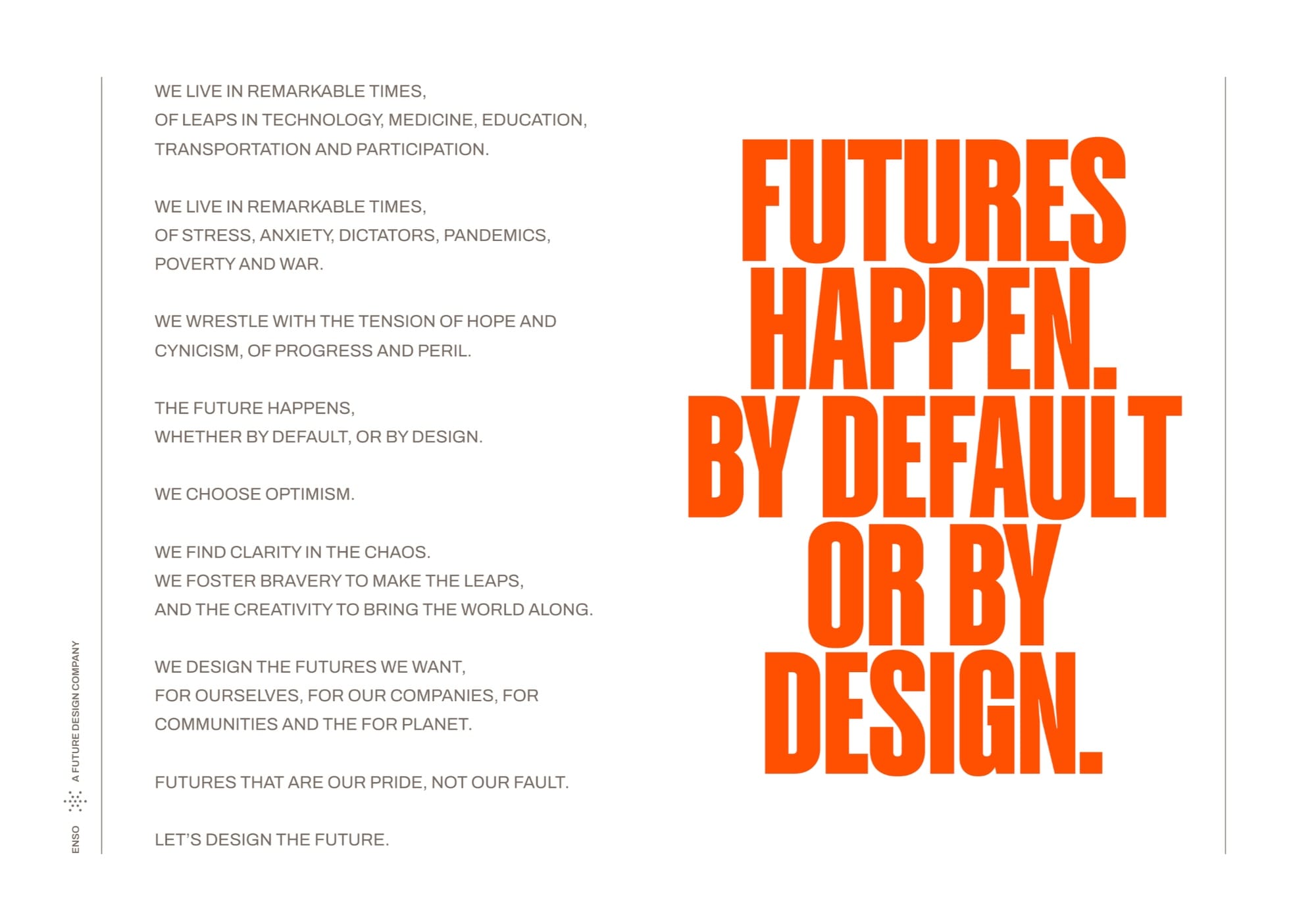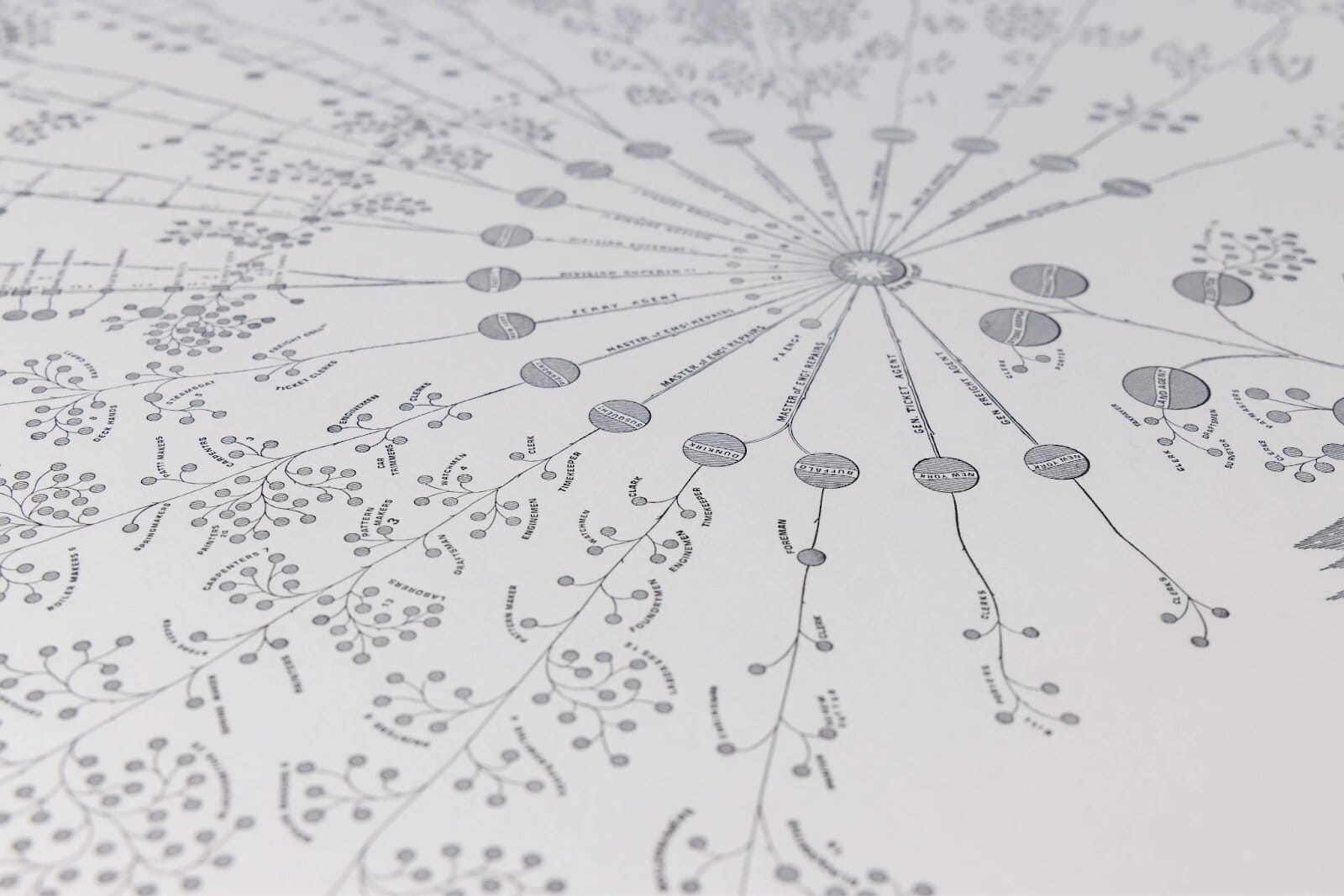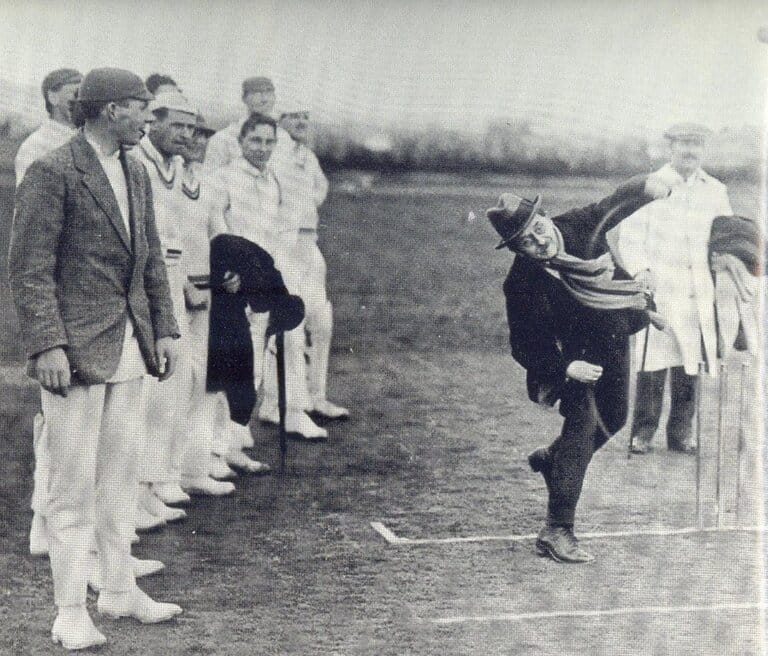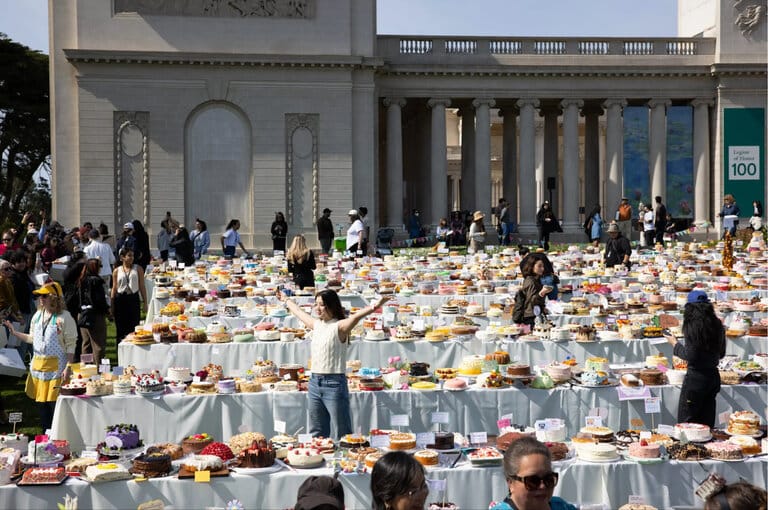Future Design Inquiries. April 2025

This month: A manifesto, it's time for building, the scarcity campaign, perpetual business, scale wins the future, designing flourishing organizations, the Swedish philosophy of Lagom and cake parties.
Hello from your friends at enso, a future design company. Futures happen by default or by design. Here are some things we think push past the default. And we welcome your reactions, additions, and suggestions – reach out news@enso.co.
For anyone new, we’re sharing the things that make us think, bring us joy or shift our perspective.
If you no longer wish to receive our periodic updates, you can unsubscribe by clicking the link at the bottom of our emails.
What we’re reflecting on
These nuggets are curated by enso partners Hanna Siegel (HS) and Sebastian Buck (SB).
In times of fear and flux, shape the future
In volatile, uncertain, complex and ambiguous times — which surely these are — organizations face a choice: take shelter, or move forward. With tariffs and trade relationships in flux, the daily rhetoric of culture wars, government budget cuts (a return to austerity), resurgent inflation and consumer confidence reaching a 12 year low, retreat can look like a strategy. But too often, it means trading long-held values for short-term protection. Paul Weiss did this. ABC did. Columbia too. Titans of America’s legal, media, and education institutions choosing expediency over principle. Others have made different choices: Jenner & Block, The Atlantic and Princeton chose to reaffirm their values. As Sam Altman once said: “It’s difficult to overstate how important being mission driven is… derivative companies don’t excite people and they don’t compel teams to work hard enough to be successful.” This isn’t just about sticking to values. It’s also about solving real problems with courage and creativity. Rocket’s Own The Dream campaign and programs to help renters achieve home ownership is a timely example. We are working with companies that see this as an opportunity to leap forward — to apply their principles, and the spirit of the abundance agenda, to forward momentum. Some saw the covid era as a time to build. This is another of those times. In times of fear and flux, shaping the future is an act of informed bravery. People are looking for the signal in the noise. (SB)

The Scarcity Campaign
For some time now, we’ve been fed a story about what we lack. Strength. Agency. A healthy economy. Strong communities. A future better than the past. These are just a few of the things we’re told—again and again—we don’t have. Everything, we’re led to believe, is limited. Which means everything is zero-sum, and everyone must fend for themselves. That’s not to say scarcity isn’t real. Often, it is—too few vaccines, too few homes, too few friends, too few eggs. But it doesn’t have to be this way. And that’s what the scarcity campaign deliberately leaves out. Don’t fall for it.
The truth is: we built these systems. Which means we can rebuild them. The scarcity narrative cultivates a scarcity mindset—the belief that there simply isn’t enough to go around. And that mindset narrows our vision. It fuels risky behavior, erodes empathy, and breeds competition, jealousy and paranoia. In short, it makes us fearful. And fear-based choices rarely serve us well.
There is another way. The abundance mindset is the belief that there are (or we can create) enough resources, opportunities, and success to go around. It is the belief in possibility. And it leads to stronger resilience, deeper growth, greater well-being, and longer, healthier lives. It fosters clarity, courage, and—ultimately—wisdom.
We can’t control everything. But whatever we can control starts with our mindset. When Ezra Klein asked Derek Thompson if he wanted to write about abundance, he said it was because, “You can see the better future—not just the worse past or the disappointing present.” The abundance mindset isn’t wishful thinking. It’s not a passive hope or a naïve dream. It’s a choice. A commitment. An ideology rooted in the belief that possibility is worth betting on. It’s about starting every city council meeting, every community gathering, every election cycle and every discussion about the future—not with the question “How can we fix what’s broken?” but with the question “What if we got it right?” (HS)
Perpetual business
The abundance agenda is about getting back to making — and living into — big plans. The kind that built road, rail, and electricity networks. The kind that built the modern world. Why aren’t more companies thinking that way? Often, time horizon is the problem. If you’re optimizing for the next quarter, you make different choices than if you’re thinking in generations. Some say that’s not how ‘real business’ works. But maybe the best companies prove otherwise. Take Rolex. Its brand spirit, ‘perpetual’ refers to ‘an unceasing quest for excellence’, and to its business model: it’s owned by a perpetual foundation, funds the Perpetual Planet climate initiative, and quietly pours billions into its home community, Geneva. It optimizes for long term prosperity, with unmatched investment in R&D and manufacturing capability. It leads its category — by a long way; analysts say it’s one of the 50 most valuable companies in the world. IKEA, too, is owned by a foundation. Without debt or equity dilution, it has become a truly category-defining, world-spanning behemoth. Hermès is controlled by the sixth generation of the Hermès-Dumas family — a family that thinks in centuries. It has scaled timeless craftsmanship and become the crown jewel of luxury. If you want more of these stories, the podcast Acquired dives deep into the anatomy of remarkable, enduring companies. We all know sugar highs don’t lead to a healthy life, and yet capitalism has been hooked on short-term hits. We’re here for the ones getting back to the long game; that work for a future worth building. (SB)
The best way to predict the future is to create scale it
Alan Turing helped invent modern computing in the UK. Penicillin was also pioneered there. France’s Minitel anticipated the internet. Japan’s smartphones were years ahead of their time. But modern computing, penicillin, the internet and smartphones went global through America’s innovation ecosystem. These stories have repeated through history: innovation sparks anywhere, but scale wins the future. Now, the center of gravity is shifting. Despite solar panels being invented in the US, China produces ~85% of the world’s supply. Xiaomi’s SU7 is competitive with Tesla’s Model S Plaid, but priced like a Model 3. In a ‘DeepSeek moment’, BYD announced a charger that adds 470km of range in five minutes. Its self-driving system is free, and some say better than Tesla’s $8,000 version. Blocking innovations with trade barriers is self-defeating, as domestic companies fall further behind (anyone remember Fiat cars in the 1980s?). Innovation is important, but the future will be led by those that scale solutions. (SB)
Designing flourishing organizations
When we started Enso, we structured it like most companies: as a pyramid. It wasn’t fun. The conceit of the pyramid is that important decisions are best made at the top — a setup that’s both unrealistic for those making the decisions, and disempowering for everyone else. About seven years ago, we scrapped the pyramid in favor of a circle — an evolution we called ‘factory to guild’. The goal: higher trust, less process, more flow. Later, we discovered Frederic Laloux’s Reinventing Organizations, which articulated exactly what we were building toward. But we could have looked even further back. Oxford’s Rachel Botsman uncovered what’s considered the world’s first org chart — drawn for the New York and Erie Railroad in 1855. As the rail network expanded, it needed a new kind of structure that distributed authority, trust and resilience. Daniel McCallum, an engineer, designed an organic chart shaped like a flourishing tree. Leaders were placed at the bottom, as roots, supporting the system — while teams and workers branched outward like a network not a ladder. Botsman has since turned the chart into a beautiful artwork she calls The Roots of Trust. As AI shifts value away from mechanized tasks and toward uniquely human skills, it’s a good time to rethink how we design organizations — for flow, for trust, and for shared purpose. (SB)

7 things that made us think, gasp, share and laugh:
- Amid lots of talk about scarcity and abundance, I enjoyed learning about the Swedish philosophy of Lagom or ‘just enough’: “Lagom is knowing that enjoying the now of what you have does not mean you need to add more of it. After all, talking to a friend over a coffee is nice. But meeting with ten friends after ten coffees does not make things better. Lagom is to accept this and to let the fact deepen.”
- The Allahakbarries, an amateur cricket team of authors founded by J.M. Barrie, and including Arthur Conan Doyle, P.G. Wodehouse, A.A. Milne and many others. The team was active from 1887-1913 and by all accounts was terrible. “Barrie’s enthusiasm for the game eclipsed his talent for it; asked to describe his bowling, he replied that after delivering the ball he would go and sit on the turf at mid-off and wait for it to reach the other end which ‘it sometimes did.’ “

- This essay by Paul Graham on ‘Shlepp Blindness’ (“A company is defined by the schleps it will undertake.”)
- This floating flower
- One Google employee’s side hobby is creating Cake Picnics across the country with just one rule: No cake, no entry. The latest, in San Francisco, featured 1,387 cakes. “It started primarily because I wanted to eat a lot of cake,” says founder Elisa Sunga. Mission accomplished.

- Peter Leyden’s opening essay and new project, The Great Progression: 2025-2050
- These stunning images by Astrophotographer Dan Zafra of a lunar eclipse and the Northern Lights

What we’re working on
enso is a small, senior team so that we can work on just a few initiatives at a time. This allows us to go deep on some of the biggest challenges/ opportunities. Recently, we’ve been working on a few main missions with our partners:
- Defining how the world’s most dynamic ecosystem can be harnessed to fight climate change: Finding a way to turn the incredible research, education and innovation into a new future for the planet, and for us.
- A brand to radiate optimism: We think restoring optimism in the world is essential. We're exploring building a product, content and community brand around this idea.
- Changing the world of work: the labor market is the engine of prosperity, but ~80% of people are not engaged or thriving. We’re working to change the system.
Want regular inquiries? Subscribe here to get our thoughts in your inbox every so often.
See you next time.

Enso • 115 W California Blvd #9101 Pasadena, CA 91105
